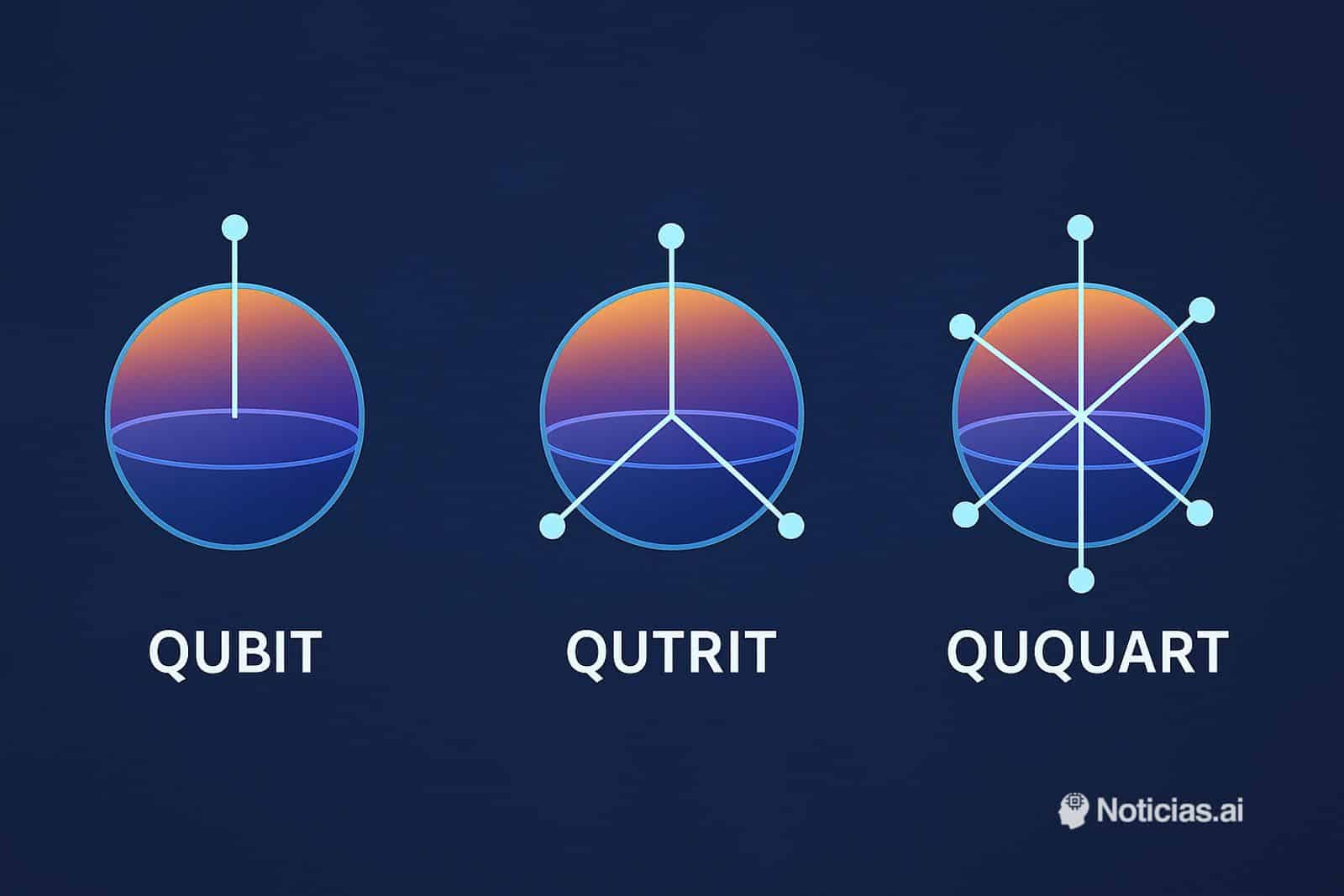Here’s the translation:
Quantum computing, still in its early stages toward technological maturity, has so far revolved around the qubit, the quantum unit of information. However, a new generation of systems, beyond the binary scheme, is beginning to capture the scientific community’s interest. These include qutrits (with three states) and ququarts (with four), which are part of a more general category: qudits.
A recent breakthrough published in Nature (2025) has successfully applied quantum error correction to qutrits and ququarts for the first time, opening up new possibilities for enhancing the performance, scalability, and efficiency of future quantum computers.
Qudits: An Evolution Beyond 0 and 1
In quantum computing, the most well-known systems are qubits, which can exist in a superposition of states |0⟩ and |1⟩. However, qudits extend this logic:
- Qubit: 2 states (|0⟩, |1⟩)
- Qutrit: 3 states (|0⟩, |1⟩, |2⟩)
- Ququart: 4 states (|0⟩, |1⟩, |2⟩, |3⟩)
- Qudit: System of d quantum states
This dimensional increase allows for more information to be stored in less physical space, increasing the logical density of quantum memory and paving the way for new efficiencies in algorithm design and hardware architecture.
If They Are Better, Why Aren’t They Used More?
Although promising, qudits have been underutilized so far for various reasons:
- Physical limitations: Many current quantum systems, like superconducting transmons, are optimized to operate with only two energy levels. Expanding those levels requires greater precision and control.
- Increased sensitivity to noise: As more levels are added, the energy distance between them decreases, which increases the probability of errors and loss of quantum coherence.
- Complexity of operations: Quantum logic gates designed for qubits are not directly compatible with qutrits or ququarts. A new model of programming and control is needed.
The Key Advancement: Error Correction in Multivalued Systems
In the study published this year, a group of researchers used a quantum resonator coupled to a superconducting transmon to create qutrit and ququart states within a microwave cavity. Through weak measurement techniques (which do not collapse the quantum state) and reinforcement learning, they successfully applied effective error correction methods to complex qudits for the first time.
The results were revealing:
- A corrected qutrit maintained its state almost as well as an uncorrected qubit.
- A corrected ququart outperformed the uncorrected qutrit.
- In all three cases, the application of error correction increased the lifespan of quantum information by a factor of approximately 1.8.
This represents a critical experimental validation that qudits can benefit from error protection techniques just like qubits.
Why Are They Important for the Future of Quantum Computing?
Currently, the main challenge in building functional quantum computers is the scarcity of useful qubits and the high level of noise. Each operation requires multiple qubits just to apply error correction, making many current devices unable to execute useful algorithms.
Qutrits and ququarts offer an attractive solution:
- More information per physical unit: a single qudit can replace several qubits in certain tasks.
- Reduced need for components: less hardware implies lower complexity and cost.
- Optimization of algorithms: some quantum algorithms (like Shor’s or Grover’s) can be rewritten to be more efficient using qutrits.
- Advantages in cryptography: multivalued channels can be more resistant to interference or attacks.
Expanding Applications
Although still in the research phase, qudits are starting to be considered in areas such as:
- Multivalued quantum cryptography, enhancing the security of communications.
- Simulation of complex physical systems, which naturally exhibit more than two states per particle.
- Topological quantum computing, where multivalued states could provide greater robustness.
Conclusion: A New Quantum Horizon
Although qubits will continue to play a central role for many years, the development of qutrits and ququarts marks a logical and necessary evolution in the race toward practical and scalable quantum computing. They are not an immediate replacement, but a promising avenue for addressing critical bottlenecks.
In a context where every improvement counts, increasing the number of states per unit of hardware could be the key to bringing closer the moment when quantum computers cease to be prototypes and become useful tools for science, industry, and society.
📌 More scientific information: [Nature, 2025 – DOI: 10.1038/s41586-025-08899-y]
🧠 via: AI News
📊 Featured illustration: representation of qubit vs qutrit vs ququart in quantum visual space.

